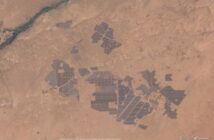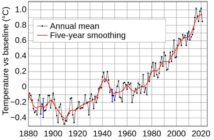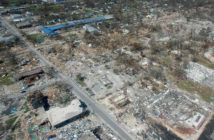Nearly five million people in India will be without water real soon if climate change continues. Chennai is one of the biggest cities in the country and its main water reserve is drying up, leaving its millions of residents at risk of inaccessible water.
Satellite surveys from June 2018 show that Chennai’s main rain-fed reservoir, Lake Puzhal is a fraction of what it was the same time last year.
The city has four main reserves and all of them are almost entirely dry. This leave the four million people dependent on non-potable water collected from makeshift wells. The Chennai Metro Water cut the water it provides by 40 per cent.
The government has been criticized for relying on the monsoon rather than taking action against the drought. The delays left millions of people without water during devastating heat waves, resulting in the death of hundreds of people.
Poor urban development in Chennai means that water is not recycled and that rainwater is not collected. The health ministry issued advice for staying safe during rising temperatures, which included avoiding the sun between noon and 3pm.
Monsoons in India:
The rainy season is referred to as the monsoon, which last from June to September. The season is characterized by humidity, which goes across the country in late May and the beginning of June. The rains begin to fade in North India at the beginning of October. South India receives greater rainfall.
The weather pattern is caused by different temperatures over the land and oceans. What makes monsoons so unique is their unpredictability because they can come on suddenly and hours of rain are common on most days.
Monsoons are embedded into societal culture in India, as it evokes vigour into its civilians, and is common to see children and adults running and dancing in the rain.
Chennai – the Gateway to South India:
Chennai is the capital of Tamil Nadu and is the fifth largest cities in India. It is one of the country’s hubs for IT, healthcare and manufacturing.
It is the first Indian city to have experienced such a drastic shortage of water, reporting a rainfall deficit of 41 per cent in Tamil Nadu until June 13 this year.
Most of the population is dependent on water tankers and a curtailed municipal supply for drinking water. There are long waiting lines for water, which is barely adequate for basic kitchen and sanitation needs. Laundry is a luxury in Chennai and a price of bottled water is reported to have gone up four times. Packaged water is only affordable for wealthier middle-class residents.
Chennai used to be one of the most water surplus metropolitan cities in the country until a couple of decades ago. Chennai had two dozen water bodies, which included three rivers and a British canal. This number has currently reduced to half a dozen water sources.
Chennai has lost 33 per cent of its wetlands in one decade. During this same time, it also lost 24 per cent of agricultural land which is crucial for increasing the groundwater table.




